
I?d say that Gears of War was my favourite exclusive series on the Xbox 360, and when I didn?t particularly make the jump to the current generation of consoles I knew I?d eventually have to bite the bullet on the Xbox One when a new Gears of War came out. I came very close with the Ultimate Edition of the first game, but couldn?t quite justify it for a HD remake and when Microsoft?s new dedicated Gears development team The Coalition announced that it would be coming to PC I had high hopes that the recently announced Gears of War 4 would as well.
These hopes thankfully were not unfounded with Microsoft?s new Play Anywhere initiative, meaning that PC gamers now?get to play the latest Xbox exclusive titles at the same time as console players.
Gears of War 4 takes place 25 years after the end of the previous trilogy. The Locust have been defeated, and the planet Sera has entered a period of relative peace. A reformed Coalition of Ordered Governments controls much of the planet, though there are many groups who have split away and call themselves the Outsiders.
The jump forward in time also means a new set of characters. Marcus and the rest of Delta Squad have now retired, and the new protagonist is his estranged son J.D. Fenix. J.D. and his friend Del are former COG Gears, but have recently quit to join the Outsiders. They?re joined by Kait, the daughter of the local Outsider leader, and we join them as they?re about to raid a COG base to steal equipment for their village. Despite the political peace, Sera?s environment has been damaged by the lengthy wars that have come before, leading to unpredictable storms called windflares that regularly destroy anything in their path, and one strikes just as J.D. and his squad are about to enter the base.
As it's a story of course the raid?doesn?t go as planned?and the group get attacked by the new COG defense robots, nicknamed DeeBees, and find themselves branded enemies of the government and being hunted. To make matters worse, a new and mysterious threat also emerges, which sends them away from the Outsider village to team up with Marcus.
The story mode felt a little shorter than previous Gears games, but was pretty well paced and didn?t wear out its welcome at any point. There are enough recurring characters, as well as a pretty cool prologue featuring several characters at various points during the history of the series, so as not to make a complete break from what?s come before while also giving the new characters time to shine. There?s a fair bit of humour between the characters and they?re all fairly likable.
Much like the original Gears of War there are a few vehicle based sections, something that the series hasn?t really done since. They?re generally quite well done and as with the story itself not overlong to the point that they become a drag, unlike my first run through the minecart section of the original on Insane difficulty for example.
It?s a little disappointing to see Gears of War do the same thing as Halo did, with the original series enemy defeated at the end of their respective trilogies both then add in new robot enemies that really aren?t all that interesting but thankfully they?re not as much of a focus here as they were in Halo 4.
As with every previous game, the story can also be played in co-op. Sadly, for reasons I don?t quite understand, the Collective made the decision to bring this back down to two players instead of the four supported in Gears 3 and Judgement. I get that sometimes there won?t be four characters in each story scene, but I doubt that anyone would have minded being a random faceless Gear or Outsider or whatever to be able to have four players. My co-op group of four had really anticipated playing through the story together as we did with the previous two games, and it was quite a let down when we realised that wasn?t possible. Two player co-op of course still works fine, just like the first two games, and is still good fun.
Gears is always a series that?s heavily focused on multiplayer, and The Collective have been keen to keep that alive with Gears of War 4. The multiplayer does however come tied to what many will probably consider to be the most distasteful part of the game, microtransactions, so I?ll talk about those first.
| 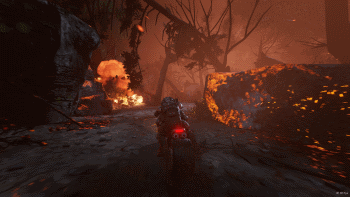
| 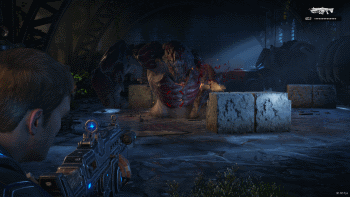
|
Gears of War 4 handles microtransactions in a very similar way to Rise of the Tomb Raider, the Breach mode of Deus Ex and several other games have in recent years. Instead of simply purchasing specific weapon skins, character models and so on you instead buy packs of cards that will randomly give you five different ones. Depending on the pack you buy these cards can be cosmetic items like skins, or modifier cards for either of the multiplayer modes. You get a couple of packs to start you off and can buy further packs with in-game credits earned during multiplayer or with real money. The simple packs aren?t terribly expensive but there are some on there that come to a considerable amount of money.
You can also create any card you want using scrap. If you have duplicates of a card or simply one you?re not interested in they can be broken down to scrap and used as currency to create any specific card, but the exchange rate isn?t all that great so you need to break down quite a few cards to make one, particularly if it?s of a higher value.
| 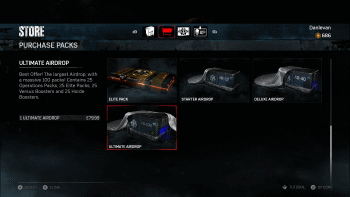
| 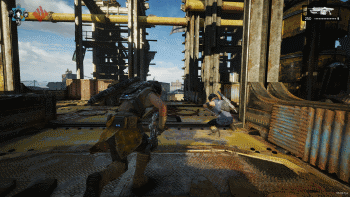
|
On the competitive multiplayer side, Gears 4 comes with a good selection of modes. Returning from previous games in the series are the self-explanatory Team Deathmatch and King of the Hill, as well as returning favourites Guardian, Warzone and Execution. Guardian has one member of each team be the leader, with the other team attempting to kill them before their leader is killed. Warzone is a survival version of a team deathmatch, which each player only getting a single life and then having to wait out if killed until the next round, and Execution is very similar with the exception that any player that is downed but not killed with an execution can be revived.
There are also two new modes, Dodgeball and Escalation. Dodgeball functions similarly to Warzone, but with a twist. While each player will only start with a single life, any allied player who gets a kill and then survives a couple of seconds after can respawn them. Escalation, finally, has three rings on the level to be captured and controlled, and starts players off with only the basic starting weapons and none able to be picked up. Players able to place power weapons on the map after each round to increase their firepower, while the enemy team does the same.
I?m sadly not as good at Gears multiplayer as I used to be, though I?ve not yet put the same amount of hours into it as I had before. The Gnasher shotgun still reigns supreme, and close range kills from it are the most likely way that you?ll be killed and I?ve certainly experienced a good number of deaths from it.
| 
| 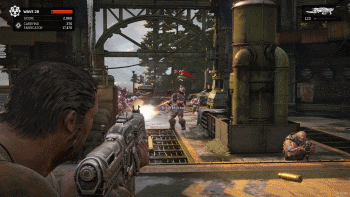
|
The other major multiplayer component of the game is the classic Horde mode, now upgraded to Horde 3.0. Retaining the advancements of Horde 2.0 from Gears 3, this time around there are a couple of new twists. While everyone can still construct fortifications, this is now restricted to being done at the mobile fabricator that you place at the beginning of the game and begin fortifying around it. Dead enemies now drop power, and you need to collect it and return it to the fabricator to be able to use it to build barricades, turrets and so on. A horde game lasts up to 50 increasingly difficult waves of enemies, with every tenth wave being a boss wave featuring one of the larger enemies that you encounter during the story. It?s probably worth playing the single player campaign before horde mode, as it actually uses the fabricator and horde mode mechanics on a few occasions, as well as having boss fights with the various giant monsters that teach you their weaknesses.
Each player now must select a class to play before starting ? you?re then locked in for as long as the session lasts. There are currently five classes in the game (an achievement refers to ?every launch Horde class? so no doubt there will be more to come) to select from, scout, engineer, sniper, soldier and heavy. Scout and engineer are considered to be the two vital classes, with scouts getting a bonus on energy deposited at the fabricator and engineers receiving a discount on purchases meaning that the two working together properly will drastically reduce the cost of building up your defences. The remaining classes receive combat bonuses that allow them to kill enemies with their respective weapon sets more efficiently and ? most importantly ? take out bosses quicker before they destroy all your defences.
Once again the cards come into play here, as they are used to increase the skills your class has with additional skill slots unlocking as you level up. Unlike in competitive multiplayer these cards actually alter your character, increasing health or weapon damage or giving extra bonuses like X-ray vision. Initially each class only allows you to equip a single skill, but as you gain levels on the class by playing you can then add extra skills to increase your abilities.
There are also random bonus rounds that give you tasks such as killing all enemies within a time limit or getting a certain number of headshot kills. Completing these bonuses grants an airdrop of weapons or equipment, and these can come in particularly useful just before a boss wave if you get lucky and have some heavy weapons dropped.
Like the single player story, Horde lets you choose the difficulty from casual to insane. With a squad of decent players the casual difficulty is pretty straightforward, but the higher difficulties are very taxing and most players are going to want to attempt them with their class and skills levelled up first.
Matchmaking in both modes seems to work fairly well, with the few times I?ve jumped into random games going without issue. I did have some lengthy waits for a game on launch day but never since, though I do find the social quickplay finds games a lot quicker than if you?re wanting to play a specific game type.
| 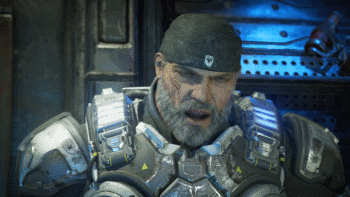
| 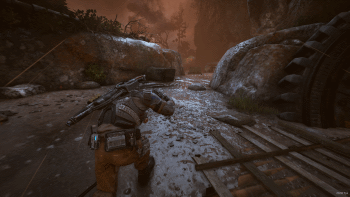
|
Gears of War 4, as I briefly mentioned earlier, is part of Microsoft?s Play Anywhere scheme launched earlier this year. Digital purchases of any game on the scheme give you both the PC and Xbox One version and while I kind of question the business sense behind that (I now have zero reason to buy an Xbox One, as Gears 4 was going to be the system seller for me and most likely many others) but it works out very well for those who either don?t have an Xbox or want the flexibility of playing between both platforms. Save games are held in the Xbox service?s cloud storage, and you can swap platforms and carry on from where you were. Games on the Play Anywhere scheme are only available through the Windows Store on Windows 10 and Gears at least requires you to be running the latest version of Windows ? not an issue for me as I?m running Windows 10 but it does limit the user base somewhat and makes me think of the PC version of Halo 2 that was released for Windows Vista only at the time.
Cross play is also supported, with Xbox and PC gamers able to play together which we?ve used on a couple of Horde sessions. It worked perfectly for most of us, though one of our PC players was getting NAT issues connecting to the Xbox party chat in a similar way to the problems I remember sometimes having back on the Xbox 360.
Like the previous games in the series before it, Gears 4 is a very good looking game and the first to be released using new Unreal Engine 4. Sticking mostly with the lighter colour palette from Gears 3, Sera remains quite a vibrant place though there are a number of darker and underground areas that harken back to the mostly grey colours of the first game. The level of detail is quite impressive, particularly on the character models and the overall chunky over-exaggerated visual style of the previous trilogy remains as striking as ever.
| 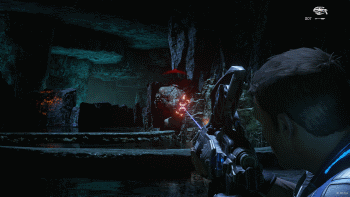
| 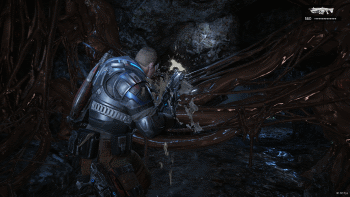
|
After the performance issues that Gears of War Ultimate had on release earlier this year I was initially a little concerned that we?d be getting a fairly barebone PC port, but was happy to see a comprehensive selection of video options ? including vsync and windowed mode - on first starting the game up, along with it picking what it considers to be optimal settings, and a benchmark to gauge your performance. Microsoft had promised improvements to the UWP platform after criticism of Gears Ultimate and Quantum Break earlier this year and it appears that they?ve delivered.
While I have no problem with maintaining around 50-60 FPS in multiplayer or Horde with the settings the game recommended for me, after getting a couple of chapters into the story mode I noticed my framerate regularly dropping lower than that and ended up capping the framerate to 30 to make it a bit smoother and more consistent. I?ve got no real issue with running games at 30 FPS, and I?d much rather a solid framerate than one that jumps up and down personally. I did tinker with dropping the settings a little but much like Deus Ex last month I wasn?t getting any substantial performance gains for the loss in visual quality so stuck with the defaults. Again the 2GB graphics card is holding me back as I suffered a drastic dip in framerate if I went any higher than the medium texture options, so I think an upgrade is due imminently. I did notice though that there was a fair bit of texture loading time after any area would load, something that I?ve seen from Unreal Engine games for over a decade and I don?t think it was my hardware at fault.
| 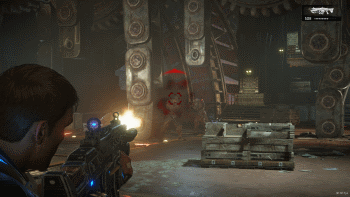
| 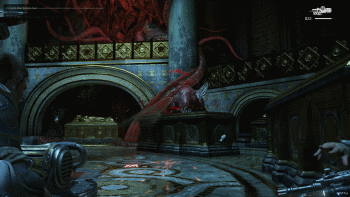
|
It?s also a pretty great sounding game. John DiMaggio returns as Marcus at his growly best, and the new characters are also voiced pretty well ? though I didn?t recognise actor Jimmy Smitts as the character Oscar until I saw his name in the credits due to his pronounced accent. The various weapon effects are also pretty good, the iconic weapons such as the Lancer being mostly unchanged from previous games in the series and instantly recognisable to anyone who?s played a Gears before and the bigger weapons amply convey their power. Composer Ramin Djawadi (who most will best know for his work on Game of Thrones) provides a pretty great score, plus he also makes use of themes by previous composers Kevin Riepl and Steve Jablonsky which creates a great feeling of continuity between the games.
The Coalition have decided not to fix what isn?t broken when it comes to gameplay, and control wise it works exactly like every previous main game in the series has and wisely ignored the changes made to the control scheme in 2013?s Judgement. If you?ve previously played any of the original trilogy you?ll immediately be right at home if playing on a controller, as it?s basically identical. There are a couple of new abilities, such as vaulting over cover when in a run or pulling an enemy over cover to execute them, but these are seamlessly integrated into the existing controls without changing anything. A few of my Horde squad have been playing using the mouse and keyboard controls and report it playing very well aside from being difficult to steer while performing a roadie run, the Gears equivalent of sprinting.
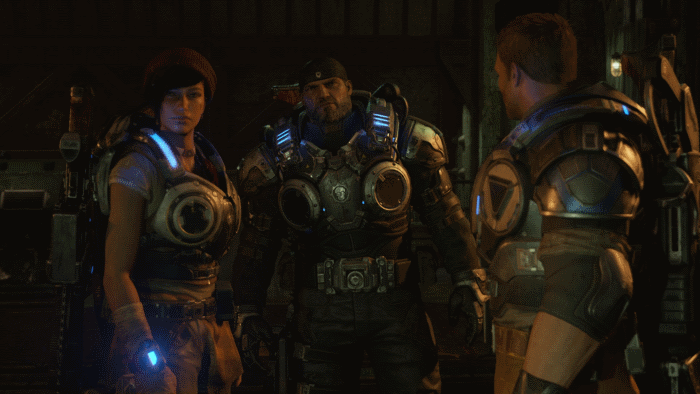
All in all, I?d say Gears of War 4 is a satisfying and worthwhile entry into the series. It?s interesting to see the parallels between it and Halo 4, with both games being follow-ups to a well received trilogy but by a new developer. While they both fall into the somewhat boring robot trap, Halo (to me, at least) tried to change too much all in one go and lost some of what made it special while Gears 4 very much sticks to what works and feels all the better for it.
Aside from the disappointing reduction in co-op players, it?s another very solid entry in the series and a return to form after the arcade-heavy misfire that was Judgement. Gears of War is back, and is just as fun as ever.
Gears of War 4 is out now on Xbox One and Windows 10 PC.





